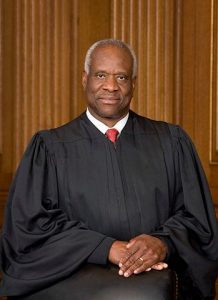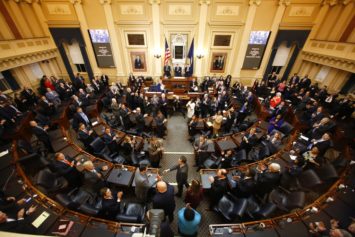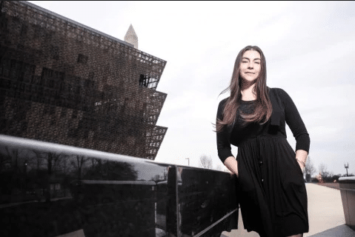
Justice Clarence Thomas is the longest serving Black Supreme Court Justice in U.S. history. (Image courtesy of the Wikimedia Commons)
After much brouhaha over his omission, the Smithsonian’s National Museum of African-American History and Culture has finally put up a display honoring U.S. Supreme Court Justice Clarence Thomas.
The new exhibit, installed Sunday, Sept. 24, comes just as the museum celebrates its one-year anniversary, one-year anniversary The Washington Times reported. The display celebrates both Thomas, the high court’s conservative stalwart and sole African-American justice, and the late Thurgood Marshall, the first Black justice to serve on the Supreme Court.
Linda St. Thomas, chief spokeswoman for the Smithsonian Institution, said the exhibit includes a photo of Thomas, along with the 1991 Jet Magazine cover he was featured on and an inscription that reads, “Clarence Thomas: From Seminary School to the Supreme Court.”
The Smithsonian seemingly had a change of heart after declining to include the Georgia native in its new museum. Thomas has faced much criticism from the Black community over his conservative and sometimes controversial opinions, but his supporters felt that partisan politics shouldn’t have kept him out of the museum.
Conservative observers raised were upset with the snub last year and petitioned the NMAAHC to include Thomas. Even Sen. Ted Cruz (R-Texas) penned a letter to the Smithsonian saying he was “deeply disturbed” by the omission. Before now, there was no mention of Thomas or his accomplishments, except for a pin and footage featuring testimony from Anita Hill, the woman who accused him of sexual harassment during his 1991 Senate confirmation.
Ronald D. Rotunda, a professor at the Dale E. Fowler School of Law at Chapman University, argued that Thomas deserved to be honored for his contributions to U.S. jurisprudence and said it was, “surprising that it has taken so long” for the NMAAHC to honor such a “seminal figure on the U.S. Supreme Court.”
“Like Thurgood Marshall, he has been a very influential justice, and like Thurgood Marshall, he has risen from humble beginnings,” Rotunda said of Thomas. “His father left him his grandparents raised him. The 1968 assassination of Martin Luther King Jr. turned him to the law. He left a successful corporate law practice and turned to public service. That path led him to the Supreme Court.”
St. Thomas told the newspaper that the museum is “evolving and other things will change over time.”
The NMAAHC didn’t respond to requests for comment.


